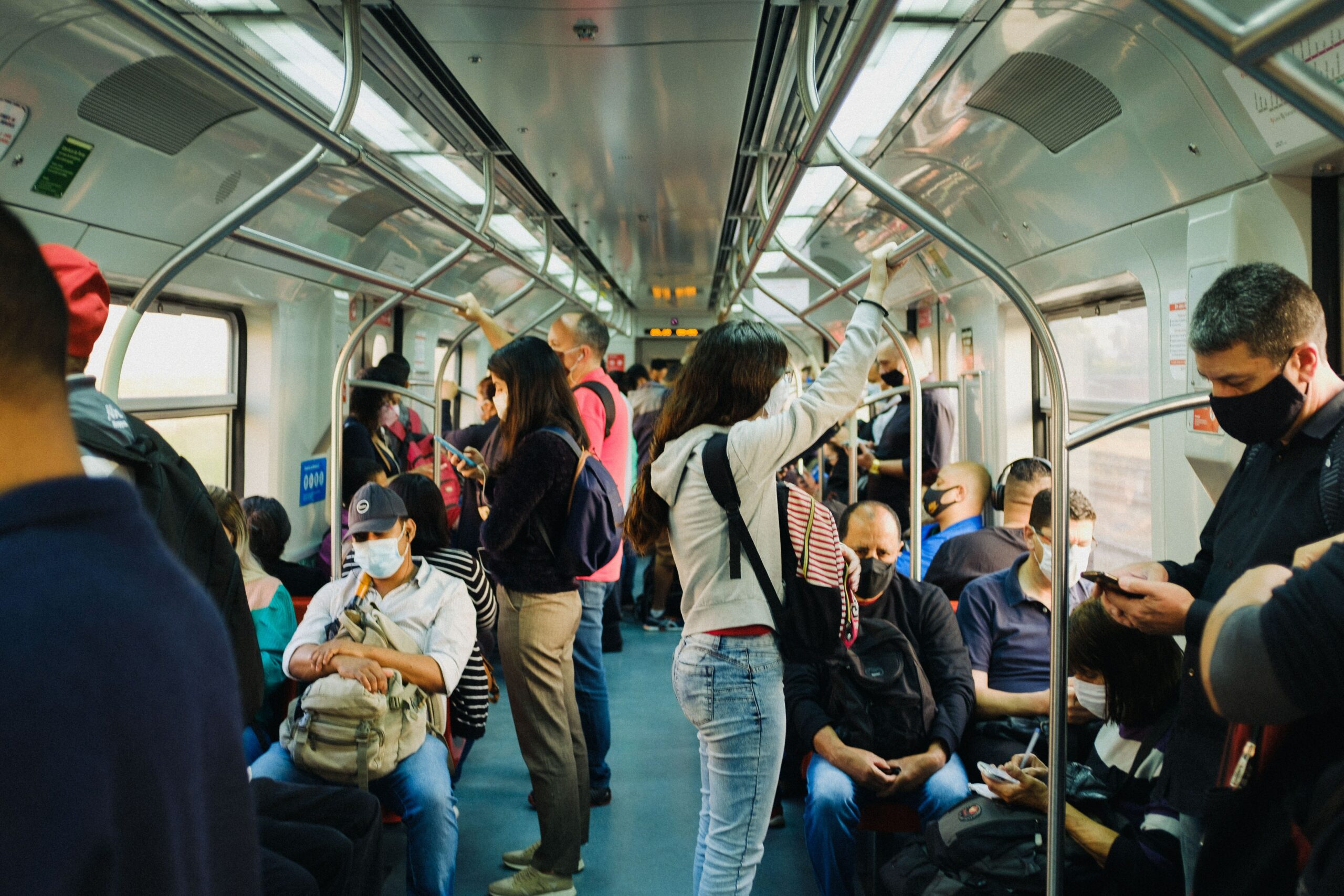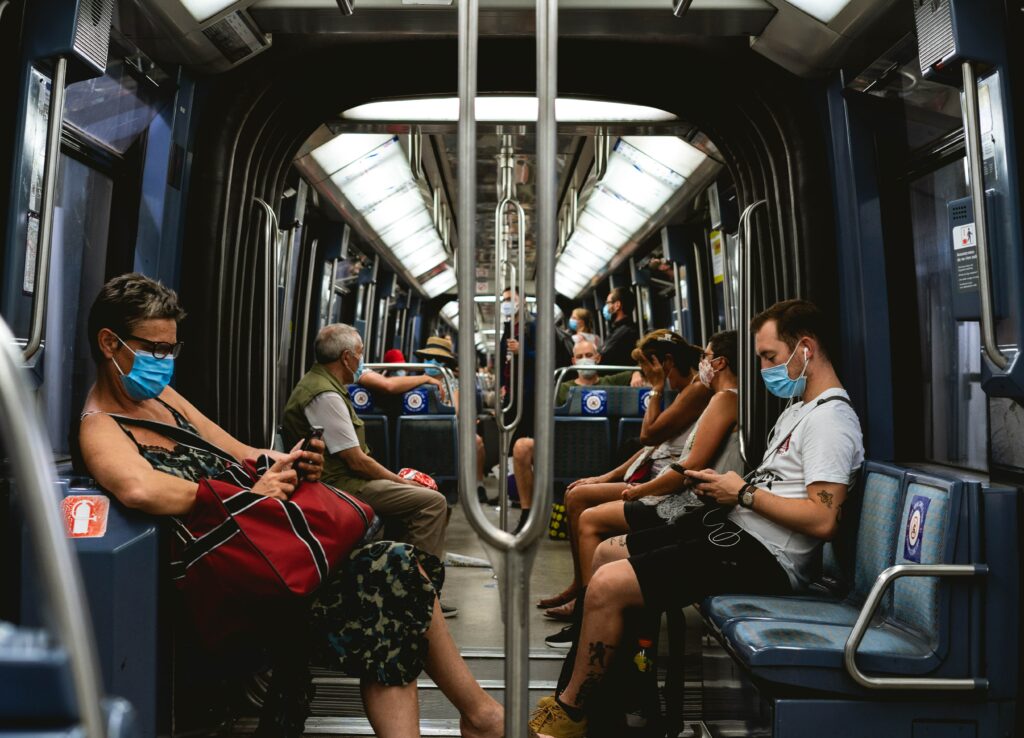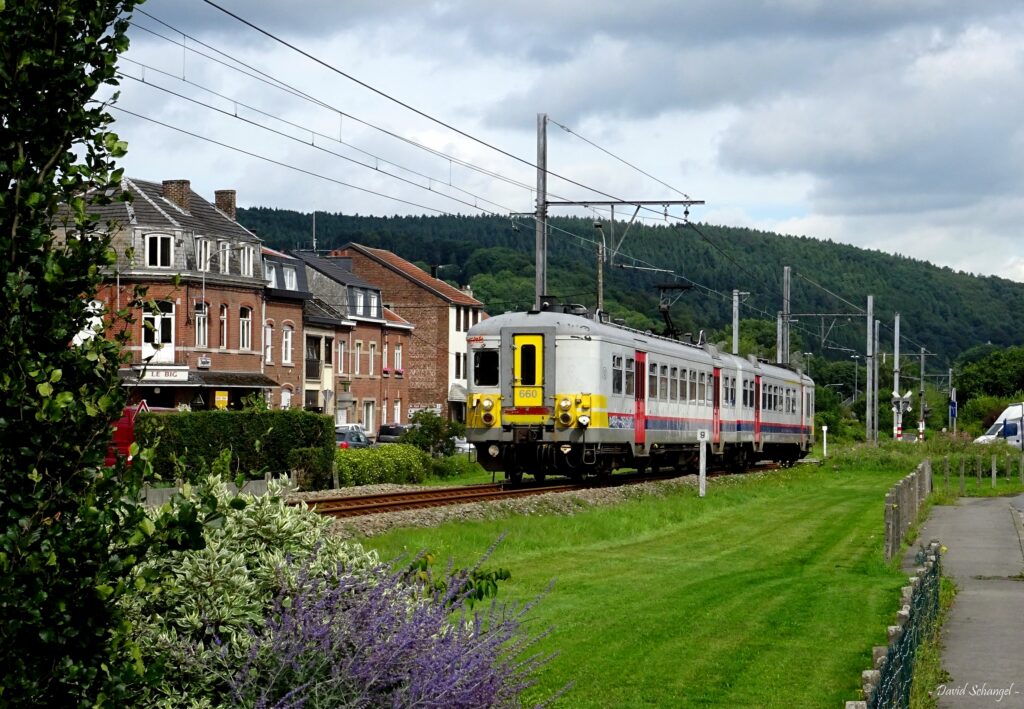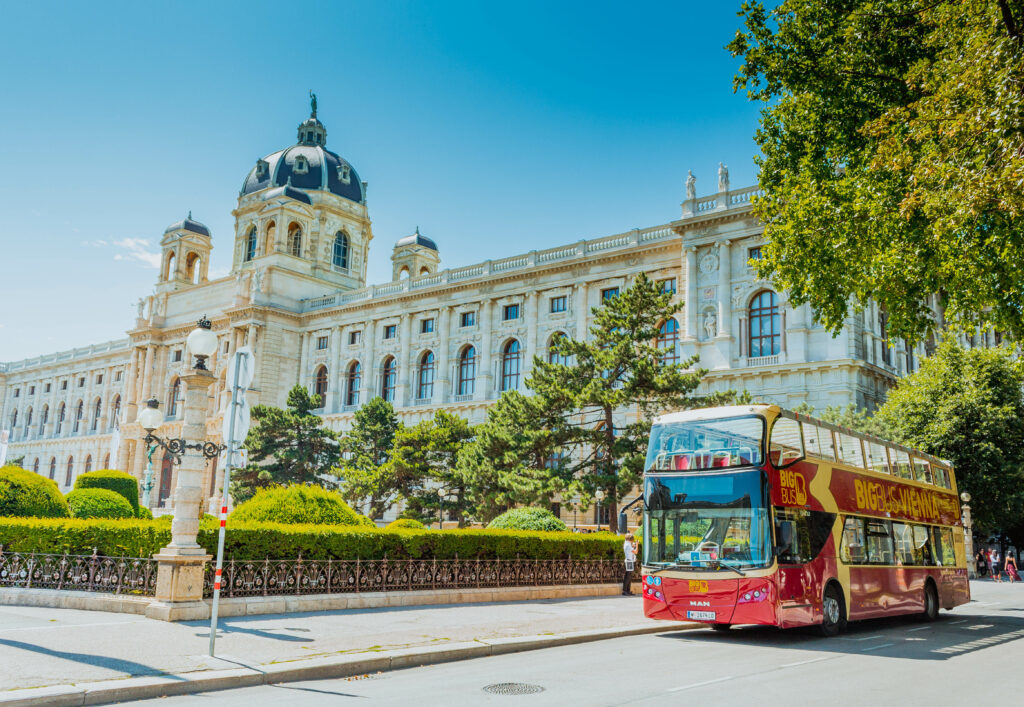
All around the world, cities, towns and even whole countries are waking up to the many benefits that come from making public transport completely free. In what appears almost unimaginable to old economic systems, to date, over 100 cities have already made public transport free, with more and more taking the leap every month. Cities as diverse as Taichung in Taiwan, Miami in the USA and Velenje in Slovenia are all providing free public mobility services to their citizens in some form, with people, local economies and the planet reaping the rewards.
The growth of truly free mobility comes at an important junction for transport and cities. Amidst a global pandemic, where the use of public transport was actively discouraged by governments and scientists, despite the limited evidence of mass transit increasing transmission rates, the dominance of the car in cities and towns reached new heights. And after this, at the height of lockdowns, people enjoyed the rare experience of almost empty streets and cleaner air. A 2020 YouGov survey found that 23% of British people expected to be using their cars more after the pandemic. In even more car-dominant societies, such as the USA and Australia, YouGov found that around 40% of respondents believed they would be increasing the use of their cars post-pandemic, despite many expressing concerns around air quality and the climate crisis.
At the same time, much of the active travel infrastructure introduced during the global pandemic, such as Low Traffic Neighbourhoods (LTNs) as a means of getting people walking and cycling, have been consistently challenged by vocal minorities. Some of the criticism levied at these schemes relates to the public consultation processes, which some felt inadequate. However, the majority of complaints come from some angry car drivers, complaining about their loss of convenience and privileged treatment on roads. Much of the evidence, however, shows that the active travel infrastructures introduced during the pandemic halved road traffic injuries relative to areas without such schemes.
Free mobility, it seems, is the perfect antidote to rising car militancy in our cities and towns around the world – especially as countries reopen and rebuild after the pandemic. The logic is sound, too. Once the cost of mass public transit becomes lower than the fixed costs of owning a car, and the operational costs of running one, people have a clear incentive to ditch their cars and jump on a bus, tram or train. And when public transport is free, there’s no way the car can compete. It is a potential rapid game changer.
In terms of rapid transition, free mobility has it all. For cities, it’s a win-win. Air pollution from the burning of fossil fuels – with transport and private cars a major contributor – is an issue that plagues cities around the world – from Addis Ababa to London – responsible for approximately 8.7 million deaths each year. In the UK alone, 40 cities and towns exceed the WHO pollution limits, with more than one in 19 deaths in these cities and towns related to long-term exposure to PM2.5 – one of the dominant emissions from cars’ exhausts.

Without radical and targeted action from governments and citizens, the issue of air pollution is only going to get worse. Getting rid of cars is therefore paramount. Incentivising citizens to jump on high capacity, frequent service, electrified public transport is one of the most effective ways of riding cities of cars and clearing the air.
Fewer cars also means less energy. And less energy means fewer emissions. Within the European Union, transport contributes 27% to overall carbon dioxide emissions, almost half of that comes from private car use. In the USA, famed for its gas guzzling cars and endless highways, the emissions from transportation accounted for around 29% of the total cumulative amount, with the number of vehicle miles driven by cars and light-duty trucks, such as SUVs, increasing by 48% from 1990 to 2019. Globally, road transport is responsible for 11.9% of greenhouse gas emissions every year. Worryingly, the emissions from road transport are going in the wrong direction when we need to be seeing deep reductions in order to keep the 1.5℃ degree target alive.
Of course, the meteoric rise of electric vehicles (EVs) in countries like Norway present a route to decarbonising road transport, but that will only get us so far. Forecasts for the mitigation potential of EVs vary, but the best estimate of their emissions reduction potential up to 2050 is a 70% reduction compared to a business-as-usual scenario. Even under this best case scenario for EVs, which doesn’t include factors such as the resource scarcity of lithium and cobalt or these metals’ susceptibility to price rises, or problems due to land-take or their micro-plastic pollution, the remaining 30% of emissions reductions must come from people ditching the car altogether.
Here, free mobility could make serious headway. In the city of Tallinn in Estonia, the decision to make public transport free increased public transport usage by 14% in the first year and greatly benefitted lower income households in and around the city. While 14% doesn’t seem like a lot, consider that in Tallinn public transport usage is already extremely high due to a great provision of service and low fares, with 8% of this increase made up of car users switching to mass mobility. After the policy was introduced, public transport use increased by 29%. The main reason given by 90% of the nearly half a million Tallinners was the free mobility policy, showing a level of popularity that could counter car populism. In Luxembourg, around 40% of households are set to benefit from their policy of country-wide free mobility. However, to maximise its impact, this needs to be part of a broad policy mix that both disincentivises car use, while giving incentives for public transport use by making it more accessible, attractive and responsive to citizens’ needs.

While the win-win of cleaner air and fewer emissions that free mobility brings to the table is well documented around the world, the wider context of the global pandemic is vital for galvanising a rapid transition away from fossil fuel-dependent mobility.
COVID-19 undermined confidence in public transport. Use collapsed during the first wave of the pandemic, as stay-at-home orders from governments came into force. In the USA, just over half of all Americans used public transport less frequently or not at all, with only 34% of US citizens using public transport the same as before. In other nations, the drop off in public transport usage was even more dramatic: Northern Ireland, for instance, saw a drop off of more that 90% during the height of the pandemic. In the city of New York, rail and bus ridership dropped by 74% even before Governor Cuomo decided to shut down the city-wide transit system.
Alongside the orders from governments to stay-at-home and work-from-home, there were also growing concerns amongst the public that mass mobility options were riskier due to increased transmission of the virus. However, it seems that the fear of using mass mobility got ahead of the evidence. A scientific study in Paris recently found that of the 150 identified COVID-19 clusters originally identified in May 2020, none originated from the Parisian public transport system. Even in Hong Kong, one of the most densely populated places on earth, where its transit system carries approximately 12.9 million people per day, only 1,100 COVID-19 cases were recorded overall, despite public transport usage not falling as much as in other megacities.
The combination of pandemic policy and misplaced fear around transmission has pushed public transport out of fashion and hardened attachments to the car. Research from the automotive services firm RAC found that the reluctance to use public transport in the UK was at its highest for 18 years. The pandemic, the RAC argues, has set back attitudes to public transport by two decades. At the same time, however, other vehicle lobbies point to the growth of home working during the pandemic as having permanently suppressed commuting by car.
But free and integrated mobility may be just the antidote for this post-pandemic bounce to car use. By making transport free – or almost free – commuters can be lured away from relying on their car, reducing emissions and congestion. In the Austrian city of Vienna, for instance, a yearly fee of €365, which amounts to €1 a day, gives you unlimited access to public transport. Half of Vienna’s population, which is around one million people, has paid for one of these transport cards, and 38% of all journeys are made by public transport with walking now more popular than the car, which accounts for just 27% of trips. What’s more, pursuing free mobility could be a route to generating employment and boosting productivity as the labour market readjusts to post-pandemic realities, while also ramping up efforts to achieve climate and environmental targets.

However, there is the question of funding free public transport. And in the wake of the pandemic, which left huge holes in transport providers’ budgets, raising the requisite funds to make mobility free is a challenge. Usually public transport is funded through three channels: fares, taxpayer and government subsidies, and third-party funding. The importance of each of these channels to the functioning of the mobility network varies from context to context, as no two networks are the same. But in removing fares from the equation, the other two channels need to pick up the slack, either through a small increase in business taxation, like in France, or exploring different commercial revenue streams, such as renting out retail space in Network Rail stations. Also it is important to remember the multiple wider, health and economic benefits to society and the economy – typically unmeasured and unrecognised – that mass transit systems provide.
While price is obviously an important factor in peoples’ decisions over transport options, it’s not the only factor. The quality, frequency and safety of public transport provided is also fundamental to a rapid transition away from the passenger car. The case of the Belgium city of Hasselt is illustrative of this, where public transport was made free with no network or system improvement. It wasn’t until the quality of the transport network and the service improved that citizens started to take advantage of it. From there, the free mobility service saw a ninefold increase in ridership, with 37% of the additional trips coming from completely new users, 16% of which had switched from cars, 12% from bicycles and 9% from walking.
Without the provision of mobility being upgraded to deal with both the increased demand that comes with making it free and the varied needs of commuters, free mobility will not be enough to substantially drive down car use and clear the air. The defining attribute is that of convenience, where the provision of free mobility not only saves citizens money, but time too. To do this though, each city, town or country must take a contextual and targeted approach to free mobility, ensuring the provision of service meets the actual needs and demands of its citizens.
Helping the poorest and most marginalised must be the foundation for any free mobility policy. In the American state of Washington, 28% of residents live in poverty and these households are 6.8 times more likely not to have a car. As rising housing costs in urban centres have pushed poorer households into suburbs with fewer transport links, families are finding themselves isolated from wider society.
The social and economic impact of this cannot be understated, as poor transport links and unaffordable costs both systematically create and perpetuate inequality. In fact, an ongoing study on social mobility at Harvard found that commuting times have ‘emerged as the single strongest factor in the odds of escaping poverty’. Another study, based in the Uruguayan capital of Montevideo, found that people living in lower income areas of the city have significantly fewer opportunities than those people living in wealthier areas due to poor mobility. In the small European nation of Luxembourg, which has made public transport free country-wide, 40% of households are expected to directly benefit, saving an estimated €100 each year.
Free mobility is not only an environmental policy, it is a social justice policy too that helps lift people out of poverty and fosters a sense of social cohesiveness through greater equality of opportunity and accessibility. In the words of Luxembourg’s mobility minister, François Bausch, the free mobility policy ‘objective is to stop the deeping gap between rich and poor. For people on low wages, transport expenses matter. Therefore, it is easier to make it free for everyone.’
Free mobility can kick-start a profusion of society-wide benefits: increased social inclusion, increased mobility of lower income citizens, better health, more disposable income for all citizens, but especially those among the most disadvantaged groups (although this may entail rebounds), lower employment costs for businesses thereby boosting employment opportunities, increasing public transports’ overall share of mobility, and reduced environmental impacts through fewer emissions and cleaner air.
In purely economic terms, estimates from the World Bank suggest that with a total investment of $4 trillion today into public buses, trains and rail networks would yield annual benefits of $1 trillion all the way up to 2030, totalling a net value of $19.6 trillion. By 2050, scaling up mass transit options would create nearly 12 million decent green jobs. There are also ongoing costs that would be avoided through a mass modal shift, enabled through free mobility, as air pollution, congestion, road traffic accidents and noise pollution costs the city of Beijing between 7.5 to 15% of its GDP.
Pursuing a policy of free mobility also presents the opportunity to engage multiple societal stakeholders, bringing them on for the (free) journey and ensuring their needs are represented. In Luxembourg, the free mobility policy that sought to increase public transport use by 50% by 2025 and reduce private car use by 15% involved engaging employers, passengers, schools and colleges, amongst others, to ensure no section of society was left out. This process of stakeholder engagement resulted in the creation of the Mobiliteit.lu app that simplifies door-to-door travel planning across all modal options – be it bike or tram – where citizens can choose their preferred route and mode, with the app providing live data on travel times and potential disruptions.
With a growing pile of evidence to support it, free public transport is going from something that old economic thinking could barely imagine, to being a practical and highly effective way rapidly to change behaviour bringing climate, health, communal and economic benefits. It’s a single initiative that is solving multiple problems.